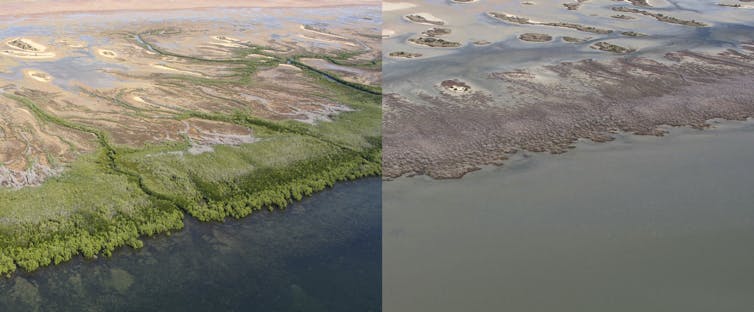UPDATE: Camilo Mora, the lead author of the study, posted a comment about the test of expert opinions. “I would like to clarify that one of the tests we did in this paper was to compare the expert’s opinions with actual empirical data collected by one of us (i.t. Tony Pitcher). We found that experts’ opinions match very well the reality of the management of each country and if anything the people inquired actually tended to be more positive about the situation (figure 1c in the paper). The test you refer to that compared the responses of different experts was intended to assess the precision of the data while the comparison of experts’ answers with empirical data was intended to assess their accuracy. – Camilo”
I wanted his clarification to come up in the main blog post. Ill look at this issue tonight and will comment/reply if appropriate ASAP. – “Bruno”

 A new paper (Mora et al. 2009) published in the high profile, open access journal PLoS Biology, documents the management effectiveness of the world’s marine fisheries. The international team based the analysis on questioners filled out by 1,188 fisheries experts. The experts were asked to assess the current effectiveness of fisheries management around the world. The study also calculated “probable sustainability of reported catches to determine how management affects fisheries sustainability”.
A new paper (Mora et al. 2009) published in the high profile, open access journal PLoS Biology, documents the management effectiveness of the world’s marine fisheries. The international team based the analysis on questioners filled out by 1,188 fisheries experts. The experts were asked to assess the current effectiveness of fisheries management around the world. The study also calculated “probable sustainability of reported catches to determine how management affects fisheries sustainability”.
One neat aspect of the study is that it asked the experts to evaluate a variety of aspects of management effectiveness including capacity to implement regulations. However, the weakness, in my opinion, is that the study relied on expert opinion, rather than data. The authors argued that the fact that the experts largely agreed with each other was evidence of the correctness of their opinions: “Experts were mostly fisheries managers, university professors, and governmental and nongovernmental researchers. Despite these diverse backgrounds, responses were highly consistent within each country (i.e., where multiple responses were given, 67% of experts chose the same answer to any given question and 27% chose the next closest response”. To me, this assertion seems dubious at best. (There are a number of beliefs held by most my coral reef colleagues that are demonstrably false or only weakly supported by empirical science.)
Our survey shows that 7% of all coastal states undergo rigorous scientific assessment for the generation of management policies, 1.4% also have a participatory and transparent processes to convert scientific recommendations into policy, and 0.95% also provide for robust mechanisms to ensure the compliance with regulations; none is also free of the effects of excess fishing capacity, subsidies, or access to foreign fishing. A comparison of fisheries management attributes with the sustainability of reported fisheries catches indicated that the conversion of scientific advice into policy, through a participatory and transparent process, is at the core of achieving fisheries sustainability, regardless of other attributes of the fisheries. Our results illustrate the great vulnerability of the world’s fisheries and the urgent need to meet well-identified guidelines for sustainable management; they also provide a baseline against which future changes can be quantified.
[youtube=http://www.youtube.com/watch?v=MwG3whtgn64&w=560&h=340]
Authors Summary: Global fisheries are in crisis: marine fisheries provide 15% of the animal protein consumed by humans, yet 80% of the world’s fish stocks are either fully exploited, overexploited or have collapsed. Several international initiatives have sought to improve the management of marine fisheries, hoping to reduce the deleterious ecological and socioeconomic consequence of the crisis. Unfortunately, the extent to which countries are improving their management and whether such intervention ensures the sustainability of the fisheries remain unknown. Here, we surveyed 1,188 fisheries experts from every coastal country in the world for information about the effectiveness with which fisheries are being managed, and related those results to an index of the probable sustainability of reported catches. We show that the management of fisheries worldwide is lagging far behind international guidelines recommended to minimize the effects of overexploitation. Only a handful of countries have a robust scientific basis for management recommendations, and transparent and participatory processes to convert those recommendations into policy while also ensuring compliance with regulations. Our study also shows that the conversion of scientific advice into policy, through a participatory and transparent process, is at the core of achieving fisheries sustainability, regardless of other attributes of the fisheries. These results illustrate the benefits of participatory, transparent, and science-based management while highlighting the great vulnerability of the world’s fisheries services.
[youtube=http://www.youtube.com/watch?v=ZaVJRMSm4-o&w=425&h=344]
From the concluding remarks: “Current projections suggest that total demand for fisheries products is likely to increase by approximately 35 million metric tonnes by 2030… This contrasts sharply with the 20% to 50% reduction in current fishing effort suggested for achieving sustainability, and implies that regulators may face increasing pressures towards unsustainable catch quotas. Given that the demand for fish lies outside the control of conventional fisheries management, other national and international institutions will have to be involved to deal with poverty alleviation and stabilization of the world’s human population (to soften fisheries demand), if pressures on management are to be prevented and sustainability achieved.”
Citation: Mora C. et al. (2009) Management Effectiveness of the World’s Marine Fisheries. PLoS Biol 7(6): e1000131. doi:10.1371/journal.pbio.1000131





 A new paper (
A new paper (
 ABC Radio
ABC Radio




